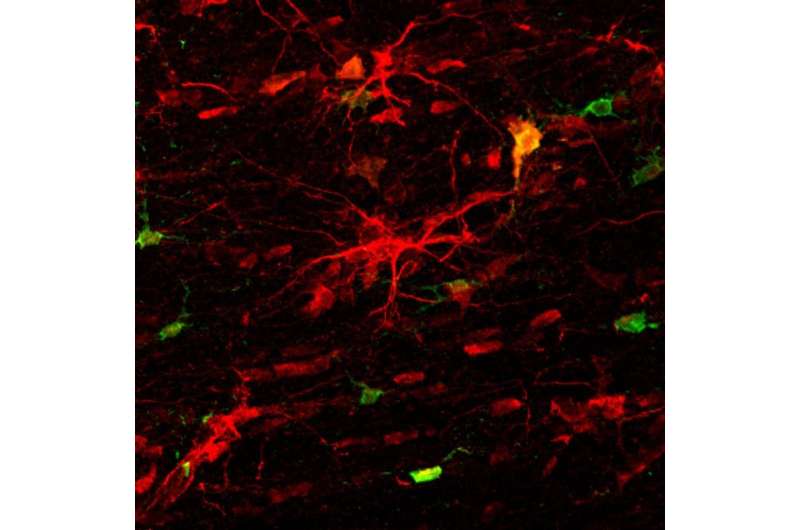Study shows how brain begins repairs after 'silent strokes'

UCLA researchers have shown that the brain can be repaired—and brain function can be recovered—after a stroke in animals. The discovery could have important implications for treating a mind-robbing condition known as a white matter stroke, a major cause of dementia.
White matter stroke is a type of ischemic stroke, in which a blood vessel carrying oxygen to the brain is blocked. Unlike large artery blockages or transient ischemic attacks, individual white matter strokes, which occur in tiny blood vessels deep within the brain, typically go unnoticed but accumulate over time. They accelerate Alzheimer's disease due to damage done to areas of the brain involved in memory, planning, walking and problem-solving.
"Despite how common and devastating white matter stroke is there has been little understanding of how the brain responds and if it can recover," said Dr. Thomas Carmichael, senior author of the study and a professor of neurology at the David Geffen School of Medicine at UCLA. "By studying the mechanisms and limitations of brain repair in this type of stroke, we will be able to identify new therapies to prevent disease progression and enhance recovery."
In a five-year study, Carmichael's team looked at white matter strokes in animals and found that the brain initiated repair by sending replacement cells to the site, but then the process stalled. The team had a short list of molecular suspects from previous research that they thought might be responsible. Researchers identified a molecular receptor as the likely culprit in stalling the repair; when they blocked the receptor, the animals began to recover from the stroke.
"White matter stroke is an important clinical target for the development of new therapies," Carmichael said.
Annually in the United States, about 795,000 suffer a stroke, resulting in nearly 130,000 deaths. Multiply the number of strokes by six, and you'll have an estimate of the number of strokes that are "silent," in that they do not produce symptoms that lead to hospitalization. Most of these silent strokes are white matter strokes.
The paper was published in the electronic edition of the Proceedings of the National Academy of Sciences.
More information: Elif G. Sozmen et al. Nogo receptor blockade overcomes remyelination failure after white matter stroke and stimulates functional recovery in aged mice, Proceedings of the National Academy of Sciences (2016). DOI: 10.1073/pnas.1615322113













